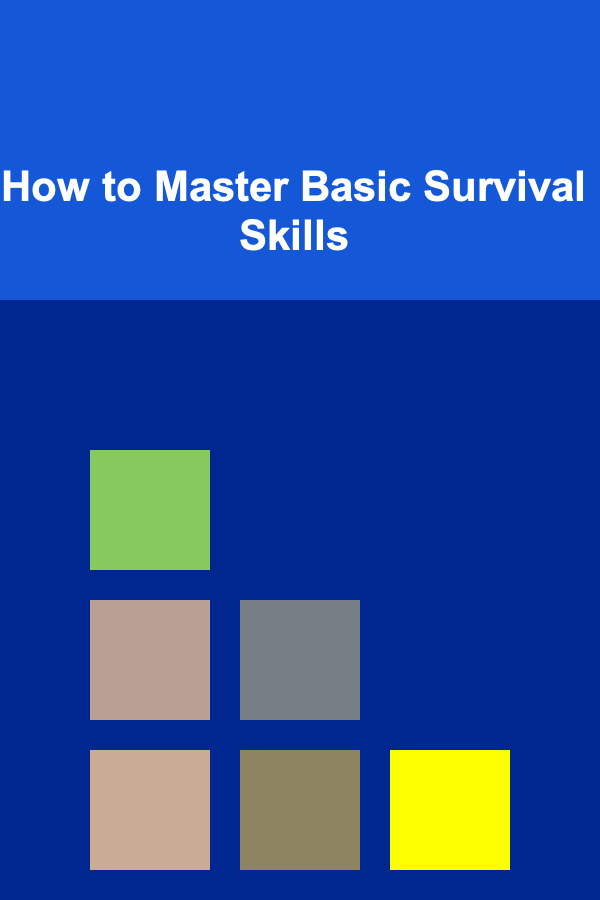
How To Learn Surfing: From White Water to Green Waves
ebook include PDF & Audio bundle (Micro Guide)
$12.99$7.99
Limited Time Offer! Order within the next:

Surfing is a captivating sport that connects you to the ocean, offering a unique blend of physical challenge, mental focus, and the sheer joy of riding waves. Whether you're dreaming of riding the perfect wave or simply want to experience the thrill of the ocean, learning to surf is an exciting and fulfilling journey. However, getting from the basics of whitewater waves to carving through green waves can be a challenging path.
In this article, we will take you through a comprehensive guide on how to learn surfing, from understanding the ocean to mastering green waves. We will cover everything you need to know, from safety tips and equipment to surf techniques and mental preparation.
Understanding the Basics of Surfing
1. The Ocean and Surf Conditions
Before even stepping onto a surfboard, it's crucial to understand the ocean and the surf conditions. The ocean is a dynamic environment that's constantly changing. Understanding how waves form and how to read surf conditions will help you feel more confident and prepared as you progress in your surfing journey.
Waves
Waves are created by the wind's energy moving through the water. The size and power of the waves depend on a variety of factors such as wind speed, direction, and the distance over which the wind blows (fetch). When learning to surf, it's essential to start with smaller, gentler waves. These are typically found in "whitewater" or after the wave has already broken.
Swell
The size and direction of the swell (the series of waves generated by the wind) are the primary factors in determining the quality of the surf. Swells come in different sizes, with larger swells typically bringing more powerful waves. As a beginner, it's best to stick to smaller swells to avoid overwhelming conditions.
Rip Currents
Rip currents are powerful currents that can pull surfers out to sea. They are common in many surf spots, but they are not something to be feared. With proper knowledge, you can avoid them or use them to return to shore if needed. Always make sure to check the surf report and ask locals about any potential hazards.
2. Basic Surf Equipment
Surfing requires a few basic pieces of equipment. Understanding the different types of surfboards and the right wetsuit for the conditions will help you progress faster and stay comfortable.
Surfboard
The surfboard is your primary tool for riding waves. As a beginner, you'll want to start with a larger board, as it offers more stability and is easier to paddle. Soft-top surfboards are an excellent choice for beginners because they're more forgiving when you fall, and they tend to be more stable in the water.
As you progress, you'll move to smaller boards designed for more advanced surfing, such as shortboards or fish boards. These boards offer greater maneuverability but require better balance and skill.
Wetsuit
Wetsuits are designed to keep you warm and provide extra buoyancy in the water. Depending on the temperature of the water where you are surfing, you'll need a wetsuit with the appropriate thickness. In warmer water, a thinner wetsuit is sufficient, while in colder conditions, you may need a thicker wetsuit to stay comfortable.
Leash
A surf leash is a cord that attaches to your ankle and the surfboard, ensuring that your board stays with you after you wipeout. This is essential for safety, as it prevents your board from floating away and potentially causing harm to other surfers.
3. Understanding Surf Etiquette
Surfing is a social sport, and there are certain rules and etiquette that every surfer should follow to ensure everyone enjoys the surf safely.
- Right of Way: In surfing, the surfer closest to the peak of the wave has the right of way. If you're paddling for a wave and someone else is already in a better position, it's best to let them go.
- Don't Drop In: Dropping in refers to taking off on a wave that someone else is already riding. This is considered poor form and can lead to dangerous situations.
- Respect the Locals: If you're surfing in a new spot, always be respectful to local surfers. Be patient, don't hog waves, and follow the unwritten rules of the surf break.
From Whitewater Waves to Green Waves
1. Starting with Whitewater Waves
Whitewater waves are the broken waves that form near the shore. These waves are ideal for beginners because they're easier to catch, and you're less likely to be overwhelmed by their power. The primary goal when learning to surf is to gain confidence in the water, learn how to position yourself, and practice popping up.
Paddling and Positioning
Before you can ride a wave, you need to be able to paddle effectively. Paddle out into the water until you're positioned beyond the breaking waves. The key to paddling is to maintain a strong, steady stroke while keeping your body centered on the board. You want to avoid paddling too far forward, as this can cause the nose of the board to dip underwater.
Catching the Wave
Once you're in position, keep your eyes on the waves. As a wave approaches, you'll want to start paddling with a bit more intensity. Timing is crucial when catching a wave. As you feel the wave begin to push you, give a strong, final paddle to catch it. At this point, you'll feel the wave lift your board and carry you forward.
Popping Up
The next step is to pop up onto your feet. This movement involves going from a lying position to standing on the board in one fluid motion. The key to a successful pop-up is practicing proper technique and using your arms to push yourself upward while bringing your feet underneath your body. Keep your knees bent and your body low to maintain balance.
2. Building Confidence in Whitewater
As a beginner, you'll likely spend a lot of time riding whitewater waves. This is a great opportunity to practice paddling, catching waves, and popping up. Don't worry too much about perfecting your technique at this stage---focus on building comfort with the water, the board, and the rhythm of surfing.
During this phase, you'll also need to work on your balance. Keeping a low center of gravity and staying flexible with your movements will help you maintain control as you ride the wave.
3. Transitioning to Green Waves
Once you're comfortable riding whitewater waves and consistently popping up, it's time to move on to green waves. Green waves are unbroken waves that offer more opportunity for maneuvering and carving. These waves provide the essence of surfing and are the goal for most surfers.
Understanding the Takeoff
Taking off on a green wave requires different timing and positioning compared to whitewater waves. Green waves are generally steeper and faster, so it's important to be in the right position to catch them. As you paddle into the wave, you'll need to judge its speed and trajectory carefully.
You'll want to start paddling just before the wave reaches you, giving a few powerful strokes to match the speed of the wave. Timing your takeoff will determine whether you catch the wave or get left behind.
Riding the Wave
Once you've successfully caught a green wave, the next challenge is to ride it. Riding a wave involves shifting your weight and using your body to steer the board. As you begin riding, you'll need to keep your body angled in the direction of the wave. Use your arms and your knees to help guide the board.
A key skill to master is reading the wave. Each wave is unique, and understanding how to navigate its shape and flow will help you ride it more effectively. Practice shifting your weight from the nose to the tail of the board and carving from side to side to maintain speed and control.
4. Common Challenges When Learning Surfing
Learning to surf can be frustrating at times. There are many common challenges that beginners face, but overcoming them is part of the journey.
Wipeouts
Wipeouts are inevitable in surfing. As a beginner, you'll likely wipeout many times, especially when trying to catch your first green wave. The key is not to get discouraged. Take the wipeouts as part of the learning process and use them to refine your technique. Always remember to fall safely, away from your board, to avoid injury.
Fear of Bigger Waves
As you progress in surfing, you may encounter bigger waves that are intimidating. It's normal to feel fear when facing larger waves, but with experience, you'll become more comfortable in these conditions. Practice your confidence in smaller waves before gradually working your way up to larger surf.
Ocean Awareness
Understanding the ocean's behavior is essential for surfing, especially when it comes to rip currents, tides, and other natural hazards. Learning how to navigate these challenges will keep you safe and improve your overall experience in the water.
Conclusion
Surfing is a rewarding and exhilarating sport that requires patience, perseverance, and practice. Starting with whitewater waves is the perfect introduction to the sport, allowing you to build confidence, learn the basic skills, and become comfortable with your board. As you progress to green waves, you'll develop the skills needed to ride and maneuver on unbroken waves, opening the door to more advanced surfing.
Remember, learning to surf is a journey that requires practice, mental resilience, and a love for the ocean. Whether you're catching your first wave or carving through green waves, the process is just as rewarding as the destination. Enjoy the ride!

How to Keep Your Home's Plumbing Pipes from Freezing in Winter
Read More
How To Understand the Art of Music Composition
Read More
How to Start Your First Day Hike: A Comprehensive Guide
Read More
How to Set Up a Blockchain Node
Read More
How to Master Basic Survival Skills
Read More
How To Get Voluminous Hair with Simple Tricks
Read MoreOther Products

How to Keep Your Home's Plumbing Pipes from Freezing in Winter
Read More
How To Understand the Art of Music Composition
Read More
How to Start Your First Day Hike: A Comprehensive Guide
Read More
How to Set Up a Blockchain Node
Read More
How to Master Basic Survival Skills
Read More